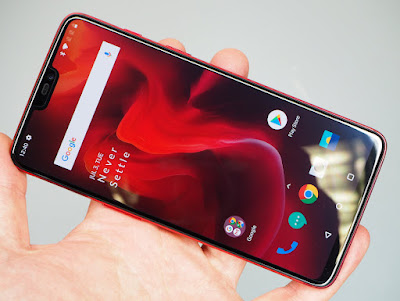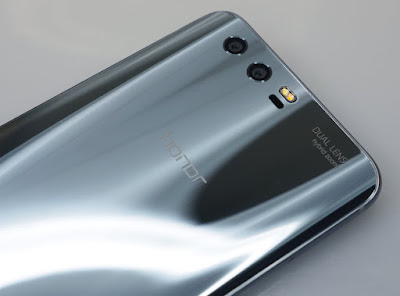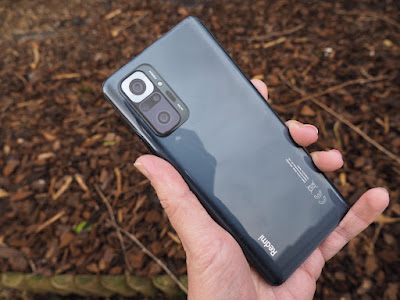Top 10 Best Mid-Range Smartphones For Photography 2021
We've reviewed a number of impressive smartphones and we've soon come to realise that you don't need to spend a fortune to get a great smartphone for photography. So, with this in mind, here's are our top mid-range choices that aren't too expensive.
A good mid-range smartphone offers you a number of premium features, but without the high price of the latest and greatest premium smartphones. Some of these were previously premium smartphones, but as the price has dropped over time, they have become more affordable. Some of these offer incredible value for money and some are even waterproof, giving them extra versatility.
There are a number of things you're more likely to find with a mid-range smartphone, that put them ahead of many of the budget smartphones for photography. The inclusion of these high-end features will improve your results, and you want to be looking for smartphones with Optical Image Stabilisation (OIS), 4K video recording, a secondary lens (for depth effect, background blur, or telephoto zoom, or even a black and white secondary camera), a handheld night mode for better low-light shots. For the more advanced photographer, you might want to find a model with manual controls, raw support, and a MicroSD card slot for increased storage space.
1. Google Pixel 4a 5G
We really like the Google Pixel 4a 5G so if you want a mid-range smartphone with 5G and some clever camera technology then the Pixel 4a 5G would be a good choice. Plus, if you're going to buy a new Google Pixel smartphone this year, the Google Pixel 4a 5G should be it as it's cheaper than the Pixel 5 but shares the same cameras, and other technology, while offering 5G connection. It also has a larger display than you find on the Pixel 5, it looks great and has a brilliant price point. We're a fan of the Google Pixel 4a 5G and we think you will be too.
Camera features at a glance: 12.2MP f/1.7, 27mm (wide) with dual pixel PDAF and OIS, 16MP f/2.2 ultra-wide, 8MP f/2.2 ultra-wide selfie camera, 4K video, Live HDR+, Night Sight, Portrait Mode, Portrait Blur and Super Res Zoom
2. Google Pixel 3a / 3a XL
Being able to get one of the best smartphone cameras available, for almost half the price of the flagship version, the Google Pixel 3, is quite simply a "no-brainer" and some may even prefer the Pixel 3a for its headphone socket.
The Google Pixel 3a (and 3) show that you don't necessarily need a larger sensor to get better results, with Google's computational photography, you're able to get some incredible results. In fact, it would be nice if some of the more traditional camera manufacturers took a leaf out of Google's book, and started introducing similar features into their cameras. In the meantime, you'll simply have to experience the future of photography, on a smartphone, such as the Google Pixel 3a.
Whether you choose the Pixel 3a or the Pixel 3a XL will be down to whether you want a larger screen, and a larger battery, or want the smaller option.
Camera features at a glance: 12.2mp f/1.8 standard camera, with OIS, PDAF, 1.4um pixels, 8mp f/2.0 selfie camera, 24mm equivalent, 6inch OLED 18:9 screen, 1080x2160, 4K 30fps video, AI photography, headphone jack, 3700mAh battery
3. Honor 20 Pro
Inside and out, the Honor 20 Pro is an impressive bit of kit. It looks good, performs really well and has a price tag that will please most people. If you're a bit picky, the screen quality and side-mounted fingerprint sensor might make the Honor 20 Pro lose a couple of points but in reality, you're getting a smartphone with premium features for a price that, really, when compared with other brands, Honor shouldn't be able to offer it to you at.
Overall, the Honor 20 Pro certainly puts up a good fight in a very crowded market and is certainly worthy of featuring on our 'best mid-range smartphone' top list.
Camera features at a glance: 16mp ultra-wide-angle camera, f/2.2, 48mp main camera, f/1.4 with 4-axis OIS, 8mp 3x telephoto camera, f/2.4 with 4-axis OIS, 2mp macro camera, f/2.4, 4cm macro focus, 3x optical, 5x hybrid, 30x digital, 2mp f/2.4 depth assist, 4000mAh battery, night mode, 6.26-inch screen, bokeh effects
4. Samsung Galaxy S8
The Samsung Galaxy S8 uses the same, already excellent, camera as the S7, with a 12-megapixel rear camera with dual pixel technology and a bright f/1.7 aperture, and improves the phone with an upgraded 8mp selfie camera with Auto Focus (AF). The screen is an impressive 5.8inch Quad HD+ screen that dominates the front of the phone, whilst maintaining the same compact size as the previous phone! The phone can capture 4K video as well as 9-megapixel stills when in video mode. It's dustproof and waterproof to a depth of 1.5m for up to 30 mins. With the ability to expand the memory with a microSD card and tough Corning Gorilla Glass 5 on the screen and back on the phone, it's ideal for those who love to get out and about and take lots of images, no matter the weather. It operates at a very impressive speed and you can use the volume control as a shutter button. ISO speeds from ISO50 to ISO800 are selectable in manual mode.
Camera features at a glance: 12mp, f/1.7 lens, 26mm equivalent, Optical Image Stabilisation (OIS), 4K video recording, Slow-motion video, MicroSD slot, raw.
5. OnePlus 6
This one just squeezes into the mid-range smartphone section, with a price point of £439. It offers premium smartphone features, but at a price point that's almost half that of many premium smartphones.
The OnePlus 6 smartphone can be described as an affordable flagship that has premium features at a not-so-eye-watering price. Image quality is excellent, the camera app gets the 'thumbs-up' and the red version is particularly stylish. We think the OnePlus 6 smartphone is an excellent buy!
The OnePlus6 is a reasonably priced smartphone with specs that make it fit right at home alongside the likes of premium Samsung, Apple, and Sony devices. Yes, it doesn't have the kerb appeal an iPhone does but a sensible person can push this to one side and be impressed by what the OnePlus 6 has to offer them.
The main camera performs really well and we really like the camera app which is really intuitive and easy to use. It's a shame the second rear camera doesn't give a longer focal length or something a bit different like a black and white camera (as Huawei do). The camera has been updated to include a multi-shot Night mode.
The 6.28inch screen is excellent and viewing isn't a problem, with a fairly small notch at the top.
There's no microSD slot which is surprising for an Android phone, there's no official IP rating (so don't get it too wet) and there's a lack of stereo speakers but apart from that, we think the OnePlus 6 smartphone is an excellent buy.
Camera features at a glance: Dual 16mp and 20mp f/1.7 lenses, 27.22mm equivalent, Optical Image Stabilisation (OIS) & Electronic Image Stabilisation (EIS), 4K video recording, High-speed / Slow-motion video up to 480fps.
6. Honor 9 Dual Camera
The Honor 9 from Huawei offers a dual camera smartphone, plenty of ram and storage, a stylish and good looking design with a 5.15inch screen, and offers all of this for a much lower price than you would expect. The dual camera offers a “Hybrid Zoom” giving a 2x zoom, with only a slight loss in image quality. The black and white camera takes impressively sharp and detailed 20mp images, and noise is well controlled whether shooting colour or black and white.
Whilst the smartphone doesn’t feature a waterproof body, there are few smartphones at this price point that do. The camera also records 4K video, and results are good. The biggest shortcoming is the lack of optical image stabilisation (OIS) which not only affects photos, but also video, and at this price point, you should be able to find an alternative with OIS, although most likely without a dual-camera.
If you want to try true black and white photography, and don’t quite have the money for a Leica M Monochrom, then the Honor 9 smartphone with a black and white camera, would make an excellent choice.
Camera features at a glance: 20mp mono camera, 12mp colour camera, f/2.2 max aperture, 27mm equivalent, 8mp selfie camera, 4K video.
7. Huawei Mate 10 Pro
The Huawei Mate 10 Pro was Huawei's top of the range flagship smartphone, not only does it feature dual Leica f/1.6 cameras with colour and black and white sensors, but also features a top of the range processor, that includes a "Neural Processing Unit" designed to speed up "Artificial Intelligence" (AI), for both smartphone and camera features. The Huawei Mate 10 Pro is a large smartphone, thanks to a 6inch screen, and it's set up with a 12mp f/1.6 colour camera, and a 20mp f/1.6 black and white camera, both lenses equivalent to 27mm in 35mm terms. The main 12mp colour camera features optical image stabilisation, and there is prominent Leica branding next to the cameras on the back, as well as a Dual LED flash. The camera can record 4K (UHD) video, as well as high-speed video at 120fps at FullHD resolution.
If you're looking for a large smartphone, with an emphasis on the camera(s) included, then the Mate 10 Pro certainly offers a complete package.
Camera features at a glance: Dual cameras 12mp colour, 20mp black and white, f/1.6 lenses, 27mm equivalent, Optical Image Stabilisation (OIS), 4K video recording, MicroSD slot, raw.
8. OnePlus Nord 2 5G
For those who think the inexpensive smartphones that are currently available just don't perform well but, on the other hand, premium smartphones are way too expensive, the Nord 2 5G will be a sensible middle ground as just like the original Nord did, the Nord 2 5G fills a gap between cheap and expensive with a price point that's reasonable and features that are well worth having a look at. Does it give premium flagship smartphones a run for their money? Not quite but that shouldn't stop you from looking at the Nord 2 5G as what it does offer (price, performance & features) make it a good mid-range smartphone option that we're happy to 'Recommend'.
The Nord released in 2020 is also still available and worth a look at.
Camera features at a glance: Rear Camera: 50MP Main Camera f/1.88 OIS, 8MP Ultra-Wide-Angle Camera f/2.25, EIS, Mono Lens f/2.5 (no macro lens as seen on the Nord), Front Camera: 32MP f/2.45 fixed focus with EIS (no ultra-wide-lens as seen on the Nord), Video: 1080p video at 30fps, 720p video at 30fps, super slow motion and time-lapse, Camera Features: Nightscape Ultra, AI Photo Enhancement, AI Video Enhancement, UltraShot HDR, Portrait Mode, Night Portrait Mode, Portrait distortion correction, Panorama, Pro Mode
9. Google Pixel 4a
The Google Pixel 4a is an inexpensive smartphone with a camera that's ideal for 'point-and-click' photographers who aren't too fussed about multiple cameras and lots of options. However, if you're going to be doing more than just sharing images on social media, you might want to see what else Google, or another brand, has to offer as detail does fall off quickly when you start adjusting the zoom (even just a little bit). The low light mode is pretty good, though, and colour accuracy is pretty much spot on.
Away from the camera, the Google Pixel 4a has a small display but the compact size of the smartphone does mean it's easy to operate and it will fit in your pocket so it could be ideal for someone who's not into the 'bigger is better' motto some other phone manufactures tend to follow. However, when you compare the Pixel 4a with other smartphones in the, what is, a very competitive field, it just doesn't have the same amount or quality of features. The battery isn't quite as good as those seen on rival smartphones at this price point, too.
That said, those looking for a basic, compact smartphone with a modern clean design which has a camera they can simply press the shutter button on to produce a decent photo for sharing on social media will find the Google Pixel 4a appealing. In conclusion, if you're into affordable prices and no-frills, the Google Pixel 4a could be for you.
Camera features at a glance: Rear Camera: 12.2MP, f/1.7, Autofocus with dual pixel phase detection, optical & electronic IS, 77-degree FOV, Front Camera: 8MP. f/2.0, fixed focus, 84-degree FOV, Camera Features: Live HDR+, Night Sight, Portrait Mode, Portrait Blur and Super Res Zoom
10. Xiaomi Redmi Note 10 Pro
The Xiaomi Redmi Note 10 Pro is set to be less than half the price of some premium smartphones yet if someone handed the smartphone to you without revealing what the brand is, you'd probably think it's a lot more expensive than its price will be. It looks great, it's easy to use and the images it produces are good. Colours are accurate, detail is sharp and all of the cameras perform well. Yes, zoom quality could be improved and so could low-light performance but overall, we were impressed with the camera and the price (we suspect it will be on release in April) could certainly make you consider purchasing the Xiaomi Redmi Note 10 Pro.
Camera features at a glance: 108MP quad-camera: 108MP f/1.9 wide-angle camera, 8MP f/2.2 ultra-wide camera, 5MP f/2.4 telemacro camera with AF, 2MP f/2.4depth sensor, 16MP f/2.45 front camera,









